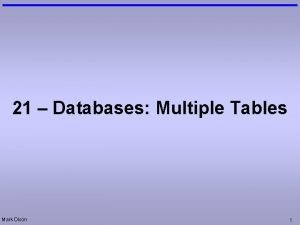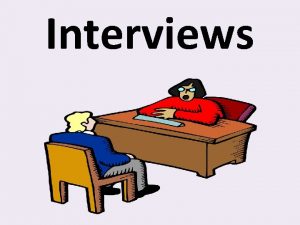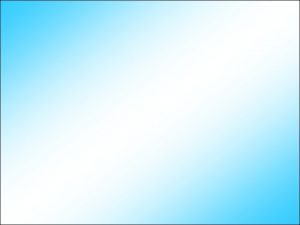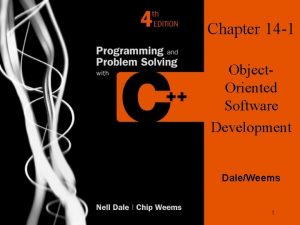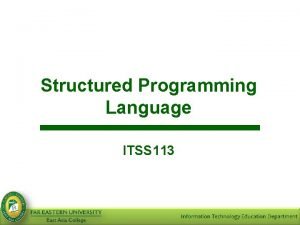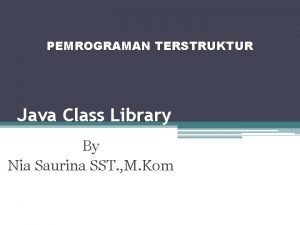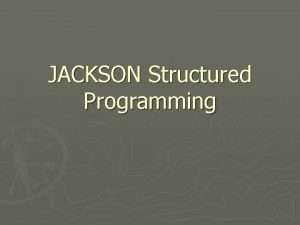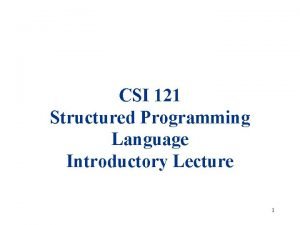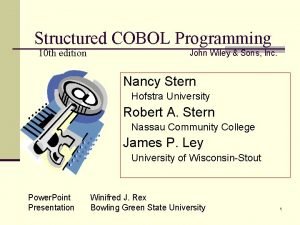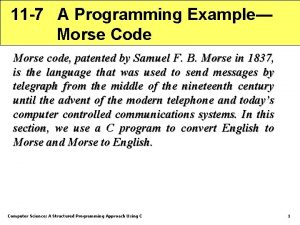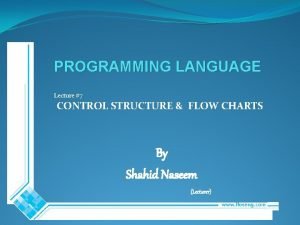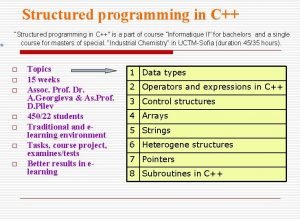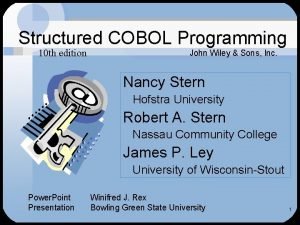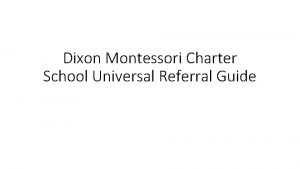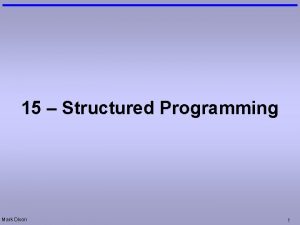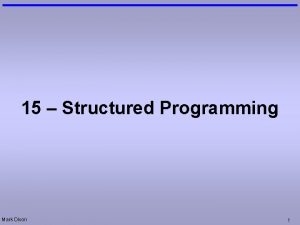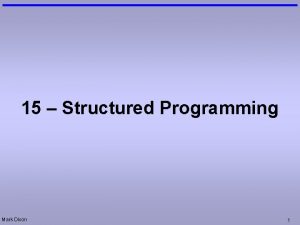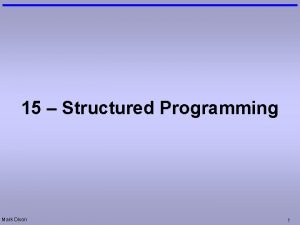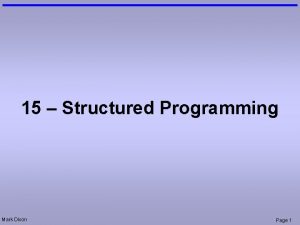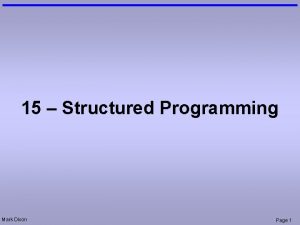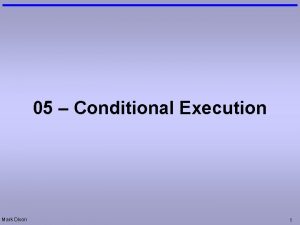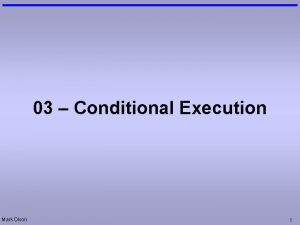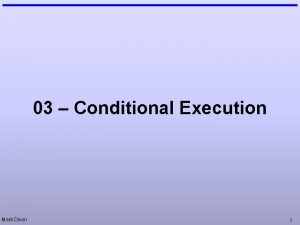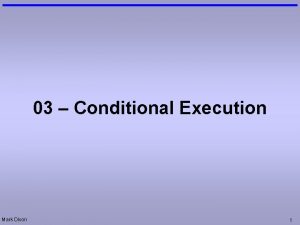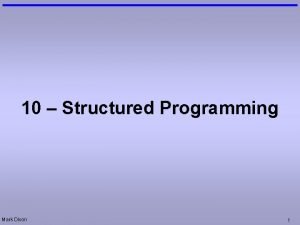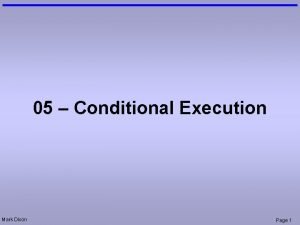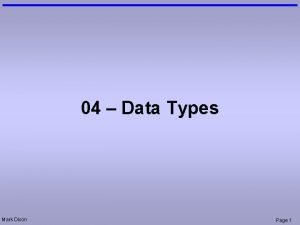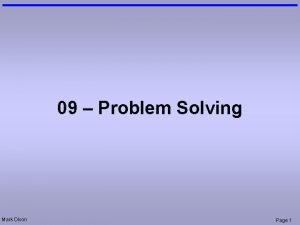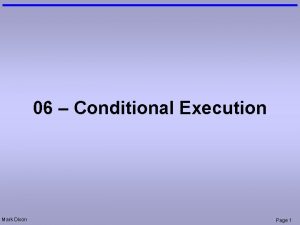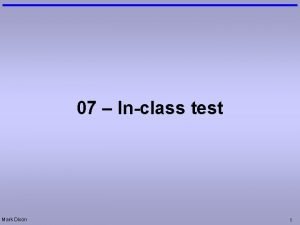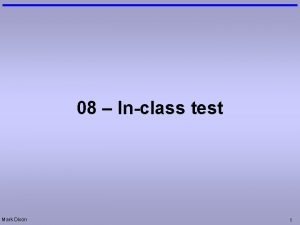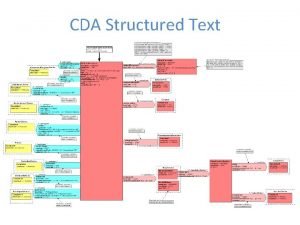15 Structured Programming Mark Dixon 1 Admin Test



















- Slides: 19

15 – Structured Programming Mark Dixon 1

Admin: Test 2 • In class test – 11 Feb 2014 – 4 Feb 2014: revision (technique) session • 50 mins • short answer (1 - 15 lines) • 10% of module mark Mark Dixon 2

Questions: Functions • Consider the following code: Function Smallest(num 1, num 2) If num 1 < num 2 Then Smallest = num 1 Else Smallest = num 2 End If End Function • name a function. Smallest • what is left in small after the following is executed? Dim small = Smallest(23, 15) Mark Dixon 15 3

Session Aims & Objectives • Aims – To highlight the fundamental ideas of the structured programming paradigm • Objectives, by end of this week’s sessions, you should be able to: – create an abstract data type, which includes • data, and • routines – use this to reduce code length Mark Dixon 4

Example: Ball Bounce v 1 <html> <head><title>Ball Bounce</title></head> <body style="margin: 0; "> <img id="img. Ball" src="Ball. gif" style="position: absolute; " /> </body> </html> <script language="vbscript"> Option Explicit Dim x Dim y Dim x. Inc Dim y. Inc Sub window_on. Load() window. setinterval "Main()", 20 x. Inc = 5 y. Inc = 3 End Sub Mark Dixon Sub Main() x = img. Ball. style. pos. Left + x. Inc If x <= 0 Or x >= document. body. client. Width - img. Ball. width x. Inc = -x. Inc Else img. Ball. style. pos. Left = x End If y = img. Ball. style. pos. Top + y. Inc If y <= 0 Or y >= document. body. client. Height - img. Ball. heigh y. Inc = -y. Inc Else img. Ball. style. pos. Top = y End If End Sub </script> 5

Structured Paradigm • Program made up of – data structures (variables & arrays), and – routines (procedures & functions) that process the data within those structures. • Each routine should perform a single, clearly identifiable operation. • Each routine should be self-contained • Abstract data type = structure + procedures Mark Dixon 6

Self-Contained Routines • Self-contained: – no references to external items (objects & variables) Function a 1(h, f) yes a 1 = (h + f) * f End Function Sub a 2() img. Ball. Style. pos. Left = 0 End Sub Mark Dixon no 7

Question: Self-contained • Which of the following routines are self-contained? Dim s Mark Dixon Function goo(h, f) goo = (h + f) * s End Function no Function poo(j, k, vi) If j > 45 Then poo = k + vi Else poo = k - vi End If End Function yes 8

Routines: Self-Contained • Good design principle: – routines (functions and procedures) should be self-contained (easier to re-use in other programs) Dim u As Long Dim a As Long a=4 u = Twice() Function Twice() Return a * 2 End Function Mark Dixon Dim u As Long u = Twice(4) Function Twice(a) Return a * 2 End Function 9

Question: Self-Contained Routines • Are the following routines self contained? Dim num 1 Dim num 2 Dim diff Sub Compare() diff = num 1 - num 2 End Sub Function Half(num) Half = num / 2 End Function Mark Dixon 10

Example: Ball Bounce v 1 <html> <head><title>Ball Bounce</title></head> <body style="margin: 0; "> <img id="img. Ball" src="Ball. gif" style="position: absolute; " /> </body> </html> <script language="vbscript"> Option Explicit Dim x Dim y Dim x. Inc Dim y. Inc Sub window_on. Load() window. setinterval "Main()", 20 x. Inc = 5 y. Inc = 3 End Sub Mark Dixon Sub Main() x = img. Ball. style. pos. Left + x. Inc If x <= 0 Or x >= document. body. client. Width - img. Ball. width x. Inc = -x. Inc Else img. Ball. style. pos. Left = x End If y = img. Ball. style. pos. Top + y. Inc If y <= 0 Or y >= document. body. client. Height - img. Ball. heigh y. Inc = -y. Inc Else img. Ball. style. pos. Top = y End If End Sub </script> 11

Example: Ball Bounce v 2 Sprite. vbs Ball. Bounce. htm Option Explicit Dim x Dim y Dim x. Inc Dim y. Inc Sub Init(tmp. XInc, tmp. YInc) <html> x. Inc = tmp. XInc <head><title>Ball Bounce</title></head> y. Inc = tmp. YInc <body style="margin: 0; "> End /> Sub <img id="img. Ball" src="Ball. gif" style="position: absolute; " </body> Sub Move(img) </html> x = img. style. pos. Left + x. Inc <script language="vbscript" src="Sprite. vbs"></script> If x <= 0 Or x >= document. body. client. Width - img. width x. Inc = -x. Inc <script language="vbscript"> Else Option Explicit img. style. pos. Left = x End If Sub window_on. Load() y = img. style. pos. Top + y. Inc window. setinterval "Main()", 20 If y <= 0 Or y >= document. body. client. Height - img. heig Init 5, 3 y. Inc = -y. Inc End Sub Else img. style. pos. Top = y Sub Main() End If Move img. Ball End Sub </script> Mark Dixon 12

Making a routine self-contained • identify why it isn't self-contained: Dim m Sub Move. Middle() m = document. body. client. Width / 2 pic. Dog. style. pos. Left = m End Sub • the call: Move. Middle() Mark Dixon 13

Making a routine self-contained • if variables are only used by this routine, then make them local: Sub Move. Middle() Dim m m = document. body. client. Width / 2 pic. Dog. style. pos. Left = m End Sub • the call: Move. Middle() Mark Dixon 14

Making a routine self-contained • if variables / identifiers are used elsewhere, then use a parameter: Sub Move. Middle(pic. Any) Dim m m = document. body. client. Width / 2 pic. Any. style. pos. Left = m End Sub • the call now needs an actual parameter: Move. Middle(pic. Dog) Mark Dixon 15

Making a routine self-contained • some items are difficult to fix (e. g. document – built in object): Sub Move. Middle(pic. Any) Dim m m = document. body. client. Width / 2 pic. Any. style. pos. Left = m End Sub • the call: Either: - use parameter - leave it Move. Middle(pic. Dog) Mark Dixon 16

Example: Balloon Shoot • Question: – what objects? – what variables? – what procedures / functions? Mark Dixon 17

Tutorial Exercise: Ball Bounce • Learning Objective: To create and use your own class. • Task 1: Get the Ball Bounce examples (1, 2, and 5) from the lecture working. • Task 2: Add another sprite. Hint: Use Arrays. • Task 3: Add another 5 sprites. • Task 4: Add a hit method to the sprite class, which detects the collision with another sprite. • Task 5: Modify your page to count the number of hits between the two sprites. • Task 6: Modify your page to make sprites bounce off each other. Mark Dixon 18

Tutorial Exercise: Balloon Shoot • Learning Objective: To create and use your own classes. • Task 1: Create the Balloon Shoot example (from the lecture) using object oriented concepts (classes, properties, methods, and instances) hint: use some of the code from your Interceptor example (from last week) Mark Dixon 19
 Mark dixon artist
Mark dixon artist Mark dixon
Mark dixon Disadvantages of unstructured interviews
Disadvantages of unstructured interviews Sa/sd and jsd
Sa/sd and jsd Dixon's q test
Dixon's q test Structured vs object oriented programming
Structured vs object oriented programming Cobol area a and area b
Cobol area a and area b Contoh program terstruktur
Contoh program terstruktur Percy jackson 3 cda
Percy jackson 3 cda Structured programming tutorial
Structured programming tutorial Nature of cobol
Nature of cobol Mos code language
Mos code language Language
Language Stecheometry
Stecheometry Cobol search varying
Cobol search varying Nctest login admin
Nctest login admin George washington dixon
George washington dixon Gda school
Gda school Dixon montessori charter school
Dixon montessori charter school David dixon ubc
David dixon ubc
